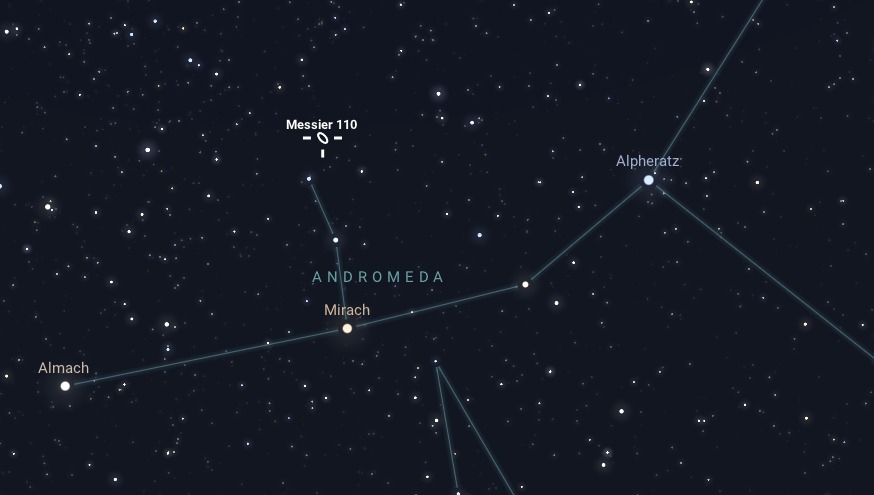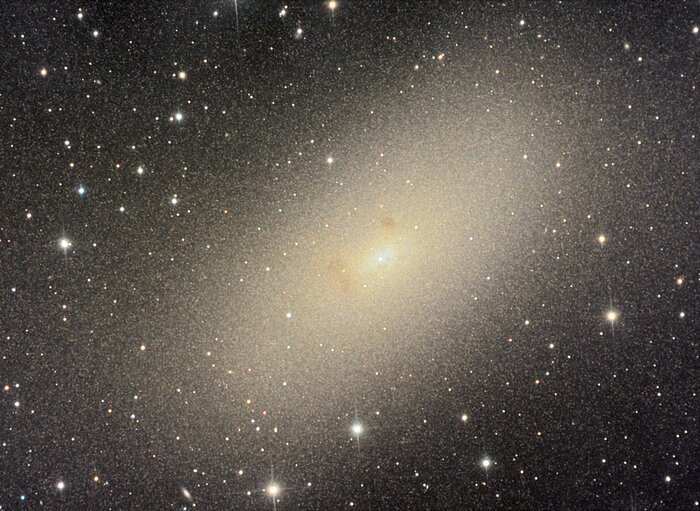M110 (Messier 110) is a dwarf elliptical galaxy and one of the satellites of the Andromeda Galaxy (M31). It was discovered by Charles Messier in August 1773, along with M31 and M32. Here’s some key information about this galaxy.
Physical Characteristics
M110 has an elongated shape, typical of dwarf elliptical galaxies, and it appears as a faint, diffuse object in the night sky. It spans about 17,000 light-years in diameter and is significantly smaller than the Andromeda Galaxy itself. Its structure lacks the distinctive spiral arms and bright core seen in larger spiral galaxies, instead appearing as a smooth and featureless stellar system.
The galaxy is composed mainly of older stars with little ongoing star formation activity. It lacks the young, bright stars and HII regions that are characteristic of active star-forming galaxies. The stellar population of M110 consists of older, redder stars, typical of elliptical galaxies, which have exhausted their gas reservoirs for forming new stars.
Location and Distance
M110 is located in the constellation Andromeda, approximately 2.65 million light-years away from Earth. It orbits around the Andromeda Galaxy along with several other satellite galaxies, including M32. Its close proximity to M31 makes it an interesting subject for studying the gravitational interactions between galaxies and the dynamics of galaxy clusters.
Observational Highlights
In the Northern Hemisphere, M110 along with M31 and M32, are most conveniently visible during late summer through early winter months, specifically from September to December when Andromeda is high in the night sky.

Start observing M110 in the late evening when M31 rises above the horizon. It continues to be visible throughout the night as it moves across the sky. Observing later at night into the early morning hours can provide darker skies and potentially better viewing conditions, especially in areas with moderate light pollution.
When viewed through telescopes, M110 appears as a faint haze of light due to its low surface brightness. Its proximity to the much brighter Andromeda Galaxy can make it challenging to observe under light-polluted skies. However, under optimal conditions, M110 can be seen as a faint oval-shaped patch of light near the central region of M31. Binoculars with moderate magnification (e.g., 7×50, 10×50) are also suitable for observing the galaxy from a dark site. The larger the aperture (front lens diameter), the more light can be gathered, making the galaxy easier to see.



